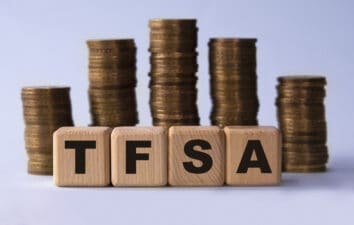Not to alarm you, but a market crash is coming.
But if you’re an experienced investor, you probably already knew that. A market crash and ensuing recession are always coming, and there’s no avoiding it. What we don’t know is when the crash will be coming and how painful it’s going to be.
While you could go searching for shallow predictions from economists or pundits who saw the last recession coming, it’s a much better idea to surrender to the markets and focus on what you can control as an investor.
When most think of recessions, they think of 50%–60% being shaved off their portfolios like in during the 2007–08 financial disaster. Not all market crashes are steep drops followed by a relatively quick rebound, however.
There are two ways for a market to correct. Either by falling in price or doing nothing for a prolonged period.
A recession could bring forth a milder downfall, which may be followed by a lengthy period of consolidation. And although such a scenario would make it hard for contrarians to make money, especially cash-hoarders who are waiting for their opportunity to shine, it is crucial that investors hedge their bets for both scenarios: a complete market meltdown like in 2007–08 or a lengthy consolidation channel like the one suffered in the 1970s.
So, even as recession indicators continue to flash red, it’s a horrible idea to sell your stocks for cash or bonds, which have absurdly low yields. If the markets consolidate, you could never have an opportunity to buy stocks at bargain-basement prices like in 2007–08, and you’d also miss out on many years worth of dividend payments.
While valuations are a tad on the pricy side, there are still many opportunities out there that can provide adequate returns on your investment over time, with less dependence on which direction the markets are headed next.
So, instead of betting the farm on a cyclical name to provide you with the highest return in an upmarket, or going all-in on cash with the expectation of a 2007–08 repeat that may never happen, look to Bank of Montreal covered-call ETFs, like the BMO European High Dividend Covered Call ETF (TSX:ZWE), which will cut you a fat cheque every month.
The ETF offers a 6.8% yield, which is far safer than most other securities with comparable yields. In prior pieces, I outlined the covered-call strategy and how it could allow everyday investors an opportunity to get more bang out of their buck in markets that refuse to move higher.
While you will pay for the writing of covered-call options in the form of a slightly higher MER, I do think it’s worth it for those who are rattled by the markets and would rather “tune out” and ensure themselves a satisfactory return over time.
If you’re not bullish on the markets, a covered-call ETF could be the way to go. You’ll risk a bit of upside for more premium income, but in today’s shaky environment, the trade-off is worthwhile for many.
While the extra income will pad any downside that’ll come in the event of a market crash, investors must still remember that such an ETF is no substitution for cash. There’s no telling how steep capital losses could mount, as even the most conservatively managed equity portfolios or ETFs are still vulnerable to downside in a violent market crash.
If you’re in it for the long haul and aren’t one to sell on a dip, though, ETFs like the ZWE could help keep your TFSA’s head above water when things get ugly.
Stay hungry. Stay Foolish.







